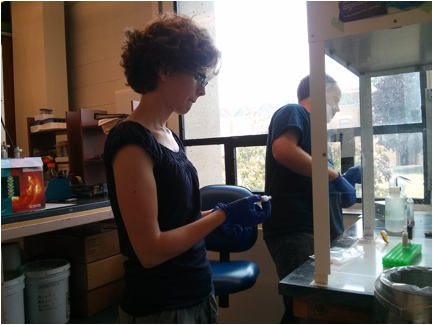Reports: DNI254473-DNI2: Rates and Controls on Methane Oxidation Beneath Sea Ice
Brice Loose, PhD, University of Rhode Island
Steve D'Hondt, PhD, University of Rhode Island
The fiscal year from 8/31/2014 to 8/31/2015 saw a gradual
buildup to the primary activities of our PRF grant. The activities can be
grouped into 3 main phases: The primary objective of this project is to evaluate the
factors that govern the rate of methane oxidation in the vicinity of ice and
sea ice, such as would be found in the Arctic Ocean. After considerable recruiting effort, a qualified candidate
was identified and hired during the period of March to June, 2015. Consequently, the project timeline has shifted to be later
than originally planned. During a parallel period, we began design and testing of the
mesocosm tanks. During June 2015 Christiane Uhlig
visited us from Germany in an effort to learn the lab facilities, and to interact
with Steve D'Hondt and research scientist John Kirkpatrick. Figure Figure
2/2013 – 12/2015 10/2011 – 12/2012 9/2007 – 11/2011 9/2002 – 11/2006
![]()
![]()
![]()













